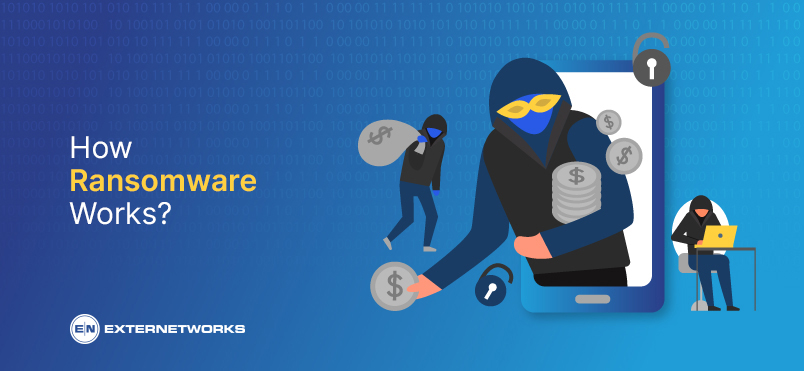28.4k views
Ransomware is a type of malicious software (malware) that blocks access to files until a ransom is paid. Ransomware attacks typically target individuals rather than businesses, and they encrypt users’ files and demand payment to decrypt them. Victims must pay the ransom within a certain period, or their files may remain encrypted forever.
Businesses are constantly under attack by cyber-criminals. You can do everything perfectly, but a hacker could still break into your system and access sensitive data. It’s important to understand that no matter how small your business is, it can still be negatively affected by poor customer service.
Ransomware attacks are one of the terrifying cyber threats a business can face. Unlike other types of cyber attacks, which aim to gain access to your customer’s data, these attacks are direct. You deal directly with criminals, and one wrong move means your entire business could be deleted if you don’t pay them up.
Ransomware is malicious software that encrypts your files and demands money to decrypt them. The ransom usually comes in Bitcoin or other cryptocurrencies, which are difficult to trace. The malware can be delivered via email attachments, infected websites, or even social media sites. Once it infects your computer, it will start encrypting all your files on your hard drive. It may also lock you out of your system by changing your desktop wallpaper or locking up your screen. You’ll need to pay the hacker before they unlock your files.
While some people think ransomware is just a nuisance, it can cause serious damage to your business. According to Bitdefender, nearly half of companies surveyed said they lost revenue due to ransomware attacks. The cost of Recovering a ransomware attack can run into thousands of dollars.
Ransomware is a type of malware designed to extort funds from its victims. Ransomware uses different techniques to trick users into thinking that another virus has infected their computer. Once the user clicks on an attachment, they are tricked into downloading the malware. When the user opens the file, the ransomware starts working silently in the background, locking the screen and demanding ransom.
Victims are often notified to purchase a cryptocurrency, such as bitcoin to pay the ransom on a locked screen. Once the ransom is purchased, victims receive the decryption key, but they may not access the encrypted file. Victims sometimes do not receive the decryption keys. Some ransomware infections install additional malware onto the infected computers even after the ransom is paid and the encrypted files are released.
Businesses should be careful about opening attachments or clicking links in emails. Ransomware attacks can happen via malware downloaded from the internet. Companies should make sure they use antivirus software to protect themselves.

A business that falls victim to a ransomware attack loses productivity and data loss. Organizations that do not pay fast may face additional consequences such as brand damage and lawsuits. There are several ways businesses can prevent ransomware attacks. One way is to ensure employees follow good cybersecurity practices, and they should avoid clicking on suspicious links or attachments in emails.
Enterprises should use strong passwords and change them regularly, and They should also keep their operating systems up to date. Comprehensive endpoint protection solutions provide real-time threat detection and prevention capabilities. These solutions help organizations identify threats before they reach the network. Enterprises should also perform regular backups of their data.
Ransomware is a type of malware that has been around for years, but it’s only recently become more widespread.
It’s not just affecting home users; businesses are being affected by ransomware. Cryptowall is the most common form of ransomware, which locks down a computer and demands money to decrypt files. Other types include Locky, CryptoLocker, Cerber, WannaCry, Petya, and Bad Rabbit.
Here are some tips to help you stay safe from ransomware:
Keep Your Operating System Updated – Make sure you have the latest version of operating systems installed like Windows, macOS, Linux, Android, iOS, and other operating systems. If you don’t, you could be leaving yourself open to a ransomware attack.
Use Strong Passwords – Password managers like LastPass and first Password are great tools to store all your sensitive information. You can create unique passwords for each website and app that requires one.
Don’t Click On Suspicious Links Or Attachments In Emails – Email attachments are usually harmless, but there are times when email messages contain malicious content. For example, someone might send you an email with a link to a video. Instead of clicking on the link, right-click on the message and select “Open Link” instead.
Don’t Open Files From Unknown Sources – Many people download apps and games from third-party sources, including Google Play Store, Apple App Store, Amazon Appstore, etc. Unfortunately, these sites can host malicious code hackers can use to infect your device.
Back-Up Data – Keeping copies of your data is essential. Even if you’re using cloud storage, you need to back up your data every while. If something happens to your hard drive, you’ll still have access to your important documents and photos.
Install A Good Antivirus Program – To avoid becoming a victim, install a good antivirus program on your devices. It will detect and remove any virus infections lurking in your system.
In conclusion, We learned about different methods used by hackers to spread ransomware. We also talked about why ransomware is so dangerous and how it affects individuals and businesses. Finally, we looked at some easy steps to protect ourselves from getting infected.
